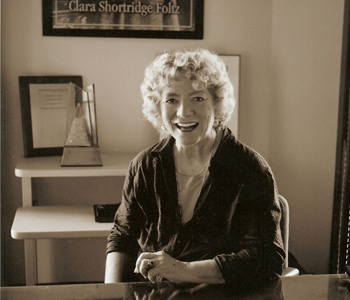Michael S. Neiberg
Dance of the Furies: Europe and the Outbreak of World War I
Belknap Press of Harvard University Press
336 pages, 6 x 9 inches
ISBN 978 0674049543
Dance of the Furies is an attempt to understand 1914 by taking a wider view of European society. Instead of focusing on the perhaps dozen or so men whose decisions brought the continent to war in that fateful summer, I focus on the reactions of the millions of people who were never consulted, but whose participation was necessary to conduct war.
I argue that the vast majority of people in Europe neither sought nor welcomed war. They accepted it because of their fundamental belief that their nation’s war was defensive and therefore just. Their responses show remarkable similarity across gender, class, and nationality. Propaganda, fear, and the incredible speed with which the assassination of an obscure nobleman led to war contributed to the widespread sense of disorientation and helplessness that gripped Europe in those fateful days.
Nationalist hatreds, imperial rivalries, and longstanding mistrusts surely existed in 1914. But they were insufficient to cause a continental war.
The blame for the war falls to the mismanagement of the statesmen and diplomats who thought they could profit from the minor predicament—crisis is far too strong a word—caused by the assassination of Archduke Franz Ferdinand without resorting to war. By the time they realized their enormous mistake, it was too late.
This contrast between the minor causes of the war and its massive, worldwide effects helps to explain the overwhelming sense of tragedy that surrounds World War I.
The people of Europe were now stuck in a war they had not caused, but equally one they could not stop. The total war of 1914 had already produced a conflict that could only end with a total peace. Thus Europeans knew that the only possible course of action was to fight on. The only future worse than a future of war was a future of defeat.
The first few months of the war produced atrocities on all sides, unprecedented levels of casualty, and massive disruption of stable societies. In some places, most notably Germany, Russia, and Austria-Hungary, the lies and misjudgments of the regimes were so vast that revolution eventually resulted. The war also produced hatreds sufficient to leave behind them fascism, genocide, and an even more terrible war a generation later.
In a nutshell, I argue that the hatreds of the murderous 20th century were a product, not a cause, of World War I.

The people of Europe were now stuck in a war they had not caused, but equally one they could not stop. The total war of 1914 had already produced a conflict that could only end with a total peace. Thus Europeans knew that the only possible course of action was to fight on. The only future worse than a future of war was a future of defeat.
I wrote this book to help me work my way out of a teaching problem.
I simply could not explain the outbreak of the war to my students in one or two lectures. The cataclysm of 1914-1918 seemed so unprecedented that my students could not fit it into the history of Europe they had learned. Neither the traditional diplomatic explanations nor explanations based on forces like nationalism, imperialism, and militarism adequately explained matters either.
I was also uncomfortable with putting the people of 1914 into what I half-jokingly called “the stupid box,” making the war out to be some colossally rash act of a generation supposedly dumber than our own. Such a view may help us convince ourselves that we could never repeat the mistakes of a former age but it is not accurate.
I thus started reading diaries and memoirs from, for lack of a better term, the ordinary people of 1914, to see if a different picture might emerge. And, as I suspected, one did.
Most people expected the diplomats to solve the Sarajevo crisis as they had solved crises in Morocco and the Balkans. They also expected Kaiser Wilhelm and Czar Nicholas to work for peace as they had traditionally done, at least in Europe, since taking their thrones. In other words, the system would work as it had in the past to prevent small problems from causing continental wars.
People soon went back to thinking about summer vacations and local news. The first “trial of the century” was taking place in Paris: Mme. Henriette Caillaux, having shot a newspaper editor, was then testing out a defense of not guilty by reason of insanity. This approach had never before tried in Europe. Her lawyer argued that Henriette Caillaux had had to assume the unnatural male role of defending her honor when her husband, the French minister of finance, failed to do so. The jury agreed, finding her not guilty just days before the war began. The Caillaux trial, not distant Balkan affairs, occupied the front pages of newspapers until the last days of July 1914.
When, shockingly, the Austro-Hungarian ultimatum of July 23 made it appear as if war might after all result, Europeans greeted it not with enthusiasm but resignation and despair. The most common analogy they made was to a natural disaster, an event that comes without warning, devastates communities in a flash, and leaves tragedy in its wake. Like natural disasters, wars were to be endured, not welcomed. I found dozens of such analogies in the letters and diaries of Europeans at the time.
Methodologically, I relied on the new “Transnational Turn” that looks at nationality as just one among a variety of identities.
Reducing Europeans to their nationhood simplifies the picture far too much. While not ceasing to be French or German, they also had, for example, Catholic, working-class, and regional identities. Transnational scholars originally examined forces that cross borders and are beyond the control of nation-states such as climate change. My book is one of the first to apply it to war.
I tried as much as possible to let the people of 1914 speak for themselves. I also tried to juxtapose words written by people from opposing sides on roughly the same day to show how similar reactions were.
Regardless of whether one was French or German, male or female, rich or poor, reactions were much the same. Reading a quotation in Dance of the Furies, a reader would often be hard pressed to identify the nationality of the author.
Take for example the sections on how Europeans found out about the war. Up until the final days a remarkably small number of people thought that war would result. Reservists went off to vacation without their military papers, generals continued their vacations in soon-to-be enemy countries, and, except in a few cases, the pages of diaries are full of every topic under the sun but war.
In an age before 24-hour news networks and the internet, people found out that war had broken out in a wide variety of ways. Fishermen found out from flags flown on shore, farmers from men on horseback playing bugles, and in small towns from the ringing of church bells. In many cases, people asked the men ringing the bells what the commotion was about; when they found out war had been declared, one common response was “against whom?”
Reading this section should put to rest any notion that the people of Europe were urging their leaders to fight a war.
Such enthusiasm as did exist was limited to young men and those people who thought that even a state of war was preferable to the tension of the anxious final days of July. But even those people most enthusiastic about the war when it began had grown disillusioned within a few weeks. As early as the end of September 1914, it is difficult to find anyone who was enthusiastic about the war, or who could remember how the shooting of an archduke had led them into this tragic situation.

Transnational scholars originally examined forces that cross borders and are beyond the control of nation-states such as climate change. My book is one of the first to apply it to war.
Scholars have spilled gallons of ink on the elites of 1914 and on trying to assign blame for the war’s outbreak. Neither of these approaches helps us to understand the fundamental meanings of the war. I hope that Dance of the Furies will generate new questions and reenergize debates about the events of 1914 and their wider meanings.
I also hope to move the scholarship on the war away from national models. There is, of course, a value in studying national history; without the work of many fine national scholars I could not have written this book. Nevertheless, it seems to me that the scholarship on this war is not yet international enough. As a result we see the war through too narrow a lens. Only when we try to see this world war through international lenses will we see it in all its complexity.
Finally, I am aware that historians cannot separate themselves from the age in which they write. The story of a nation that went to war believing its struggle to be defensive only to find out that the logic was rashly based on evidence that later turned out to be questionable struck me as not limited to 1914.
In 2003, the United States found itself in a much more complex environment than it anticipated. Nevertheless, as in 1914 Europe, public criticism largely ceased once the war began and the nation supported or acquiesced in a war far different from the one it had gone to war to fight.
Thus I ended the book with a quotation from a letter to the editor of a British newspaper in the final days of peace. The writer warned his readers not to believe the promises of a quick, glorious victory being sold to them by politicians and journalists. Instead, he foresaw that the leaders of Europe were “trifling” with a dangerous game as likely to destroy the winners as the losers.
What this reader wrote in 1914 remains true today: “All who participate in war, of course, intend to put the death and destruction (sic) on [their] enemies, but history shows that crushing punishment has often fallen on those who thought they could impose it on others.”




We don't put paywalls. We don't distract you with ads. We don't sell your data.
Please help to keep this running!